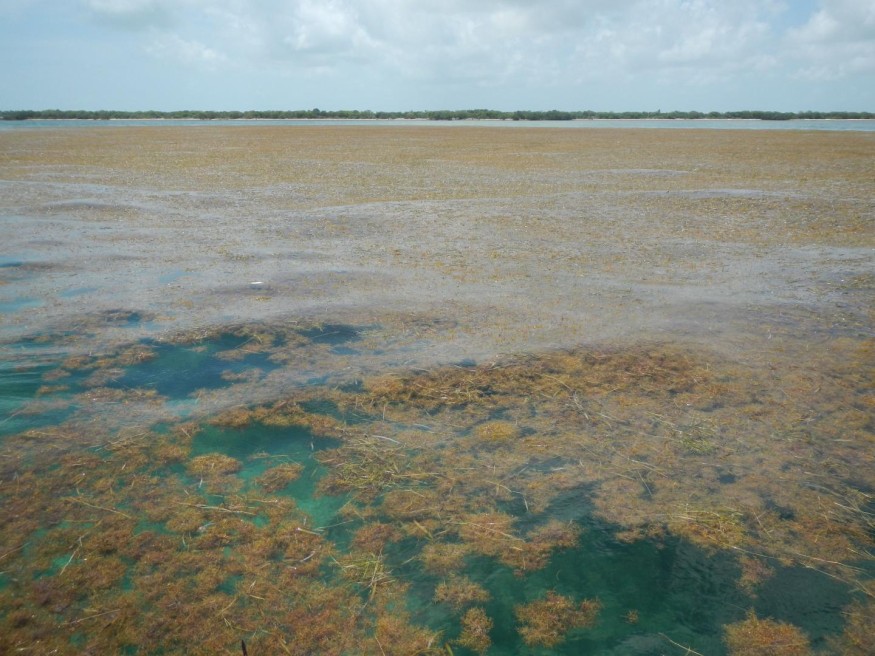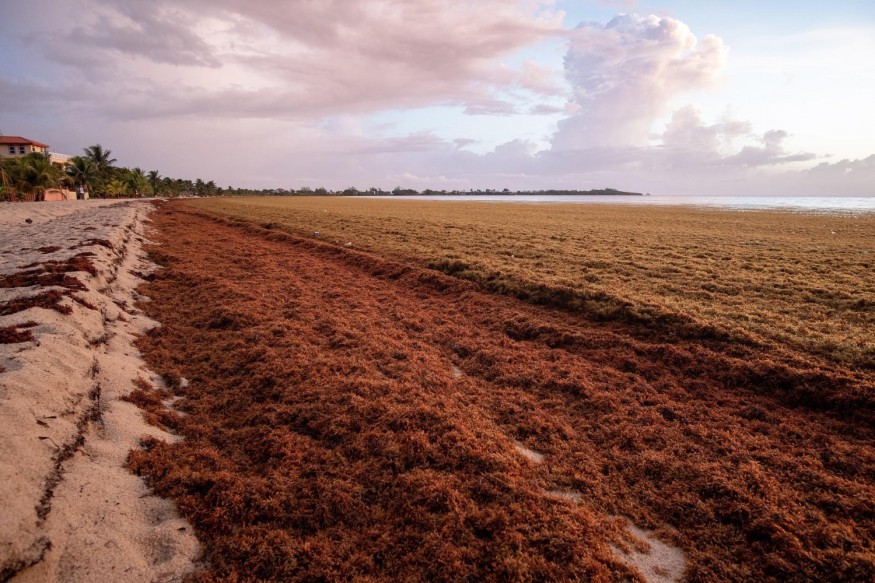This summer, beachgoers should expect an abundance of disgusting seaweed. One expert described what's behind the vegetation explosion and the potential health risks.
Sargassums Washing Ashore

This summer, a record amount of sargassum, sometimes brown seaweed, might accumulate on the shores of famous American beaches around the Gulf of Mexico.
Last week's tropical rainfall washed up additional sargassum, a seaweed that helps offer critical habitat for various creatures, including fish, crabs, shrimp, and turtles. However, when vast amounts of non-toxic plants wash ashore, the breakdown process can be hazardous to human and animal health.
With large levels of sargassum currently floating in the Atlantic Ocean and the Caribbean Sea, 2022 seems like a summer in which the weed will be a major feature at the seashore, which might be terrible news for beachgoers and coastal dwellers.
"A big accumulation of seaweed in coastal waters or on beaches may be damaging to other plants and animals as well as humans," Dr. Chuanmin Hu, an optical oceanography professor at the University of South Florida, stated to AccuWeather.
Why are Sargassums Harmful?

According to Reuters, sargassum emits hydrogen sulfide gas and ammonia when it decomposes. Beachgoers may experience symptoms such as heart palpitations, shortness of breath, dizziness, vertigo, headache, and skin rashes after exposure to decaying sargassum and its toxic byproducts.
In 2018 when sargassum levels were high, over 11,000 cases of acute sargassum poisoning were reported on the islands of Guadeloupe and Martinique. Barbados, an island nation, declared a national emergency that year due to excessive sargassum levels.
Rising Cases of Sargassum Poisoning
More cases of severe sargassum poisoning are predicted this year, especially in the United States, as sargassum levels in sections of the Caribbean Sea and the Gulf of Mexico are expected to be considerably higher than in 2018. Truckloads of brown seaweed have already been hauled from beaches throughout the Gulf of Mexico in Mexico this year, with sargassum growth beginning earlier and more aggressively in 2022.
Temperature, wind, sunshine, storms, and the Gulf of Mexico's loop currents are all variables that influence the brown seaweed's development and spread. Climate change is another topic Hu and his colleagues are looking into, although research on whether climate change will help sargassum thrive is conflicting.
"Experiments have shown that if temperatures rise over a certain point, sargassum development decreases," Hu told AccuWeather National Reporter Bill Wadell.
Sargassum's expansion increased dramatically starting in 2011, when it "hit a tipping point," according to Hu, causing larger-than-normal weed clumps to wash up on beaches in the Caribbean, Brazil, and the Gulf of Mexico. Since then, the threat posed by sargassum has only escalated, with experts still baffled as to why.
"The last two months, April and May 2022, have already established a new record; the overall amount of sargassum has doubled from March and April this year," Hu remarked. "This has never happened before, but why in the wide ocean?"
Tons of Sargassum

In May 2022, it was projected that more than 18.8 million tons of sargassum were floating across the tropical Atlantic, Caribbean Sea, Central West Atlantic, and the Gulf of Mexico, with the peak likely later this June or July.
The University of South Florida's Sargassum Watch System has further information regarding sargassum, its spread, and the location of current and potential future sargassum blooms.
Related Article : Seaweed and Chalk May Help Combat the Ocean's Plastic Pollution
For more environmental news, don't forget to follow Nature World News!
© 2025 NatureWorldNews.com All rights reserved. Do not reproduce without permission.





